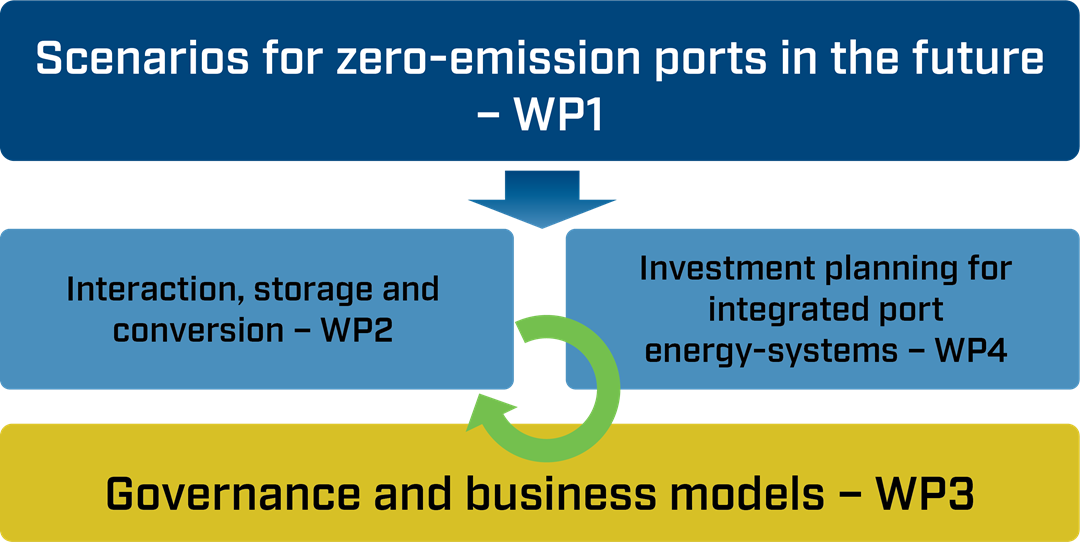
INTERPORT – Integrated energy systems in ports
INTERPORT Work packages
Four research questions
INTERPORT builds on the idea that ports will play a pivotal role in our transition to a zero-emission society as decarbonised energy hubs. Not only will they provide clean energy for maritime transport, but they will also increase the sector’s integration with other sectors and surrounding infrastructure, which will accelerate emission reductions.
Ports are diverse, and their ability to fulfil this potential depends on multiple factors such as the types of vessels they service, as well as their location, type, connections to the power grid, etc.
To support and accelerate the implementation of feasible integrated energy systems that utilise various low- and zero-carbon energy solutions in ports, INTERPORT will address four main research questions:
- What is the expected energy demand in different types of ports for different transition scenarios in Norway for 2030 and 2050?
- Which storage and conversion technologies are needed for different types of ports to ensure that the demand for different energy carriers can be met?
- How can ports develop business models to create value from their energy services, both for ships and vessels, and for different local energy grids and sectors?
- How can ports develop cost-efficient integrated energy systems that reduce emissions and provide sufficient flexibility, robustness and a reliable energy supply for its end users?
To answer these above research questions, INTERPORT will be organised in four, coupled work packages (WPs):
Scenarios for zero-emission ports of the future - WP1:
This work package will produce a consistent set of scenarios for the future energy demand. This will enable the development of a knowledge basis for how different types of ports can optimally develop their energy infrastructure to meet the demands of the fleet and their surroundings, and commit to the national emission-reduction targets.
WP leader: Marte Gammelsæter, SINTEF Energy Research
Interaction, storage, and conversion - WP2:
This work package will draw on the results from WP1 to develop various ways that ports can implement the energy storage and conversion technologies that will enable them to become flexible, low-carbon and, ultimately, zero-emission energy hubs. The ability to exploit interdependencies between different energy technologies will vary from port to port.
WP leader: Hanne Laura Pauliina Kauko, SINTEF Energy Research
Governance and business models - WP3:
This work package focuses on assessing the acceptance and feasibility of the scenarios and concepts identified in the previous two work packages. The assessments will distinguish between socio-political acceptance, market acceptance (users, producers, operators, infrastructure owners, investors and intra-firms), and community acceptance (procedural and distributional aspects, trust (for example in the safety), local benefits, and overall sustainability of the solutions).
WP leader: Sigrid Damman, SINTEF Digital
Investment planning for integrated port energy-systems - WP4:
This work package focuses on addressing the major challenge of providing flexible energy services at a competitive end-user price. Ports will have to undertake comprehensive investments and retrofitting to meet electrical and low- or zero-emission fuel demands from ships and vessels. At the same time, ports need to stay attractive to industrial and commercial shipping companies and align with governmental climate targets.
WP leader: Brage Knudsen, SINTEF Energy Research
